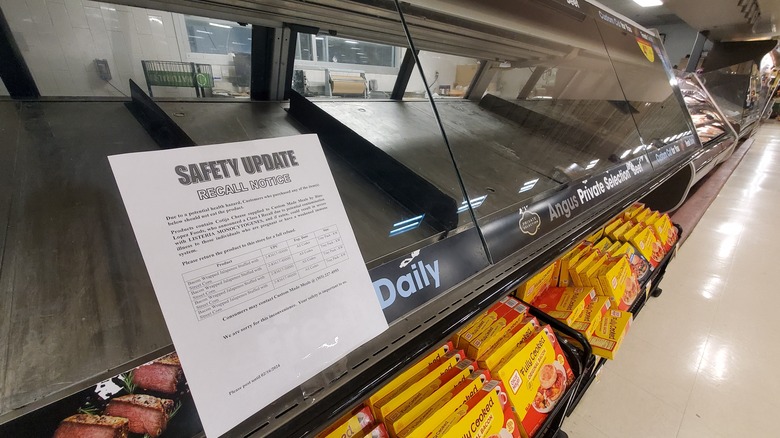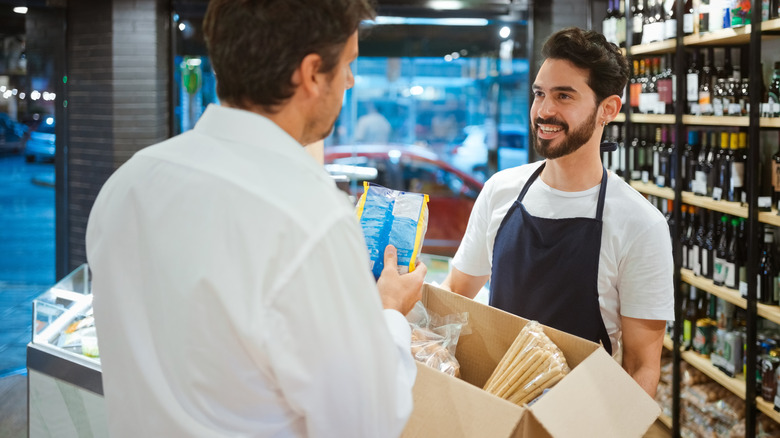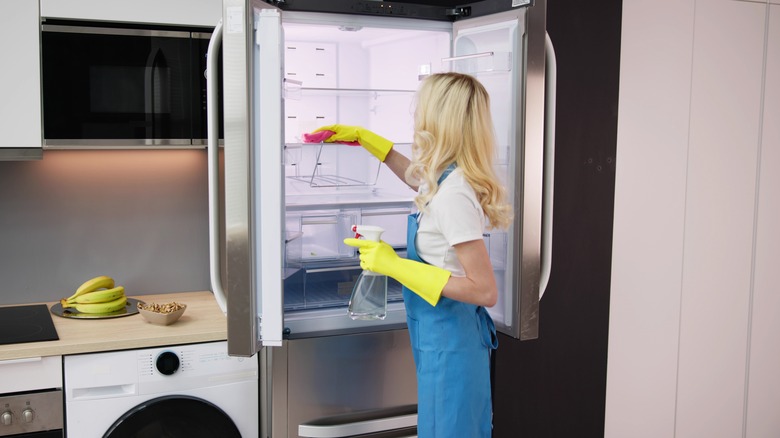Here's The Safest Way To Dispose Of Recalled Foods
Modern-day manufacturing might mean that it's much easier for foods to make it to our grocery stores and into our kitchens, but the unfortunate downside is that with plenty of production comes some room for error. Food recalls are relatively common; in 2023, the United States saw 65 food recalls due to anything from pathogens to undeclared allergens — even import violations. The most important thing to do when you realize you have products involved in a recall is to remove them from your home, but what does that mean exactly?
First, don't throw them away. When products are recalled, you can almost always take them to the grocery store where you purchased them; you should be able to get a full refund and safely return the contaminated goods. But if food is recalled, then there are a number of other steps to take to make sure you don't put yourself or your family in harm's way if you have a potentially dangerous item in your home. For specific instructions, however, always look at the recall notice issued by the manufacturer.
How to find more information about the recall
The first step to getting your money back from a recalled item is to save your receipt. You'll often need proof of purchase — especially at a grocery store — so keep those receipts in an envelope or somewhere where they're handy if you ever need them. If you accidentally tossed the receipt, don't fear. You can often bring a credit card statement for proof of purchase as well. You may otherwise be instructed to throw the food away. Just be sure you seal it very thoroughly, so no animal or other person accidentally ingests it.
Next, never eat a food product that you think has been recalled. If an item you own has been recalled but you're not absolutely certain that your purchased item is affected (recalls often involve food processed between specific dates), check the FDA's Enforcement Report; you'll find weekly recall information including item names, manufacturing codes, and other helpful notes to understand if your particular product is involved. The FDA also posts recall notices on its website. If the food you've purchased is unopened, do not open it; things like bacteria and pathogens are not outwardly visible and cannot be smelled on the food items — the smell test is unreliable for food safety, and you could risk cross-contamination.
Properly clean your kitchen after a food recall
Recalls can happen for several reasons, but foodborne illnesses like salmonella, listeria, or E. Coli are all common grounds — especially with perishable foods like meat or high-risk pre-cut fruits and veggies. If your food is recalled for pathogens, then an important step is to make sure that no cross-contamination occurs. This happens when bacteria from a recalled food item touches other foods or surfaces in your home. For example, if you make a sandwich on a cutting board only to learn that your deli meat was recalled, make sure you don't use that cutting board for anything else until it's been properly sanitized.
If the item was in your refrigerator and wasn't properly sealed or separated from other foods, then you need to clean the entire fridge. The CDC recommends removing every food or beverage item in the refrigerator before cleaning all shelves and drawers. Then, wash any items or surfaces that might have had contact with the recalled food.
Always make sure you wash your hands after handling anything that might have had contact with the bad food; it's infinitely better to be safe than sorry. It can seem like a tedious job, but it's worth it to avoid the dangers of foodborne illness.


